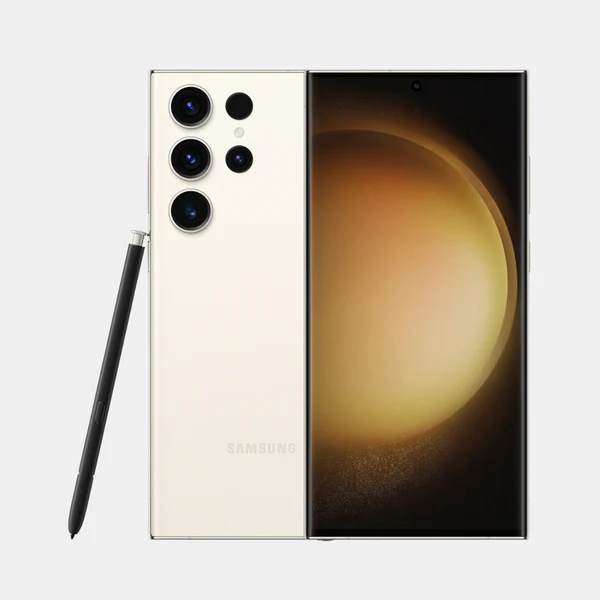The Samsung Galaxy S23, launched globally on February 17, 2023, stands as one of Samsung’s most compact yet powerful flagships. It arrived alongside the Galaxy S23+ and S23 Ultra but carved a niche of its own with a smaller form factor, Snapdragon power, and professional-grade cameras — all packed into a sleek, manageable frame.
While the phone received widespread praise, some flaws became more noticeable over time, particularly in areas like thermal control and screen brightness under sunlight. Here’s a full breakdown of this compact powerhouse — with its strengths, limitations, and honest analysis.
🗓️ Release Date & Overview
- Global Release: February 17, 2023
- Display: 6.1″ Full HD+ Dynamic AMOLED 2X, 120Hz
- Chipset: Qualcomm Snapdragon 8 Gen 2 (For Galaxy)
- Battery: 3,900mAh with 25W wired charging
- RAM/Storage: 8GB RAM with 128GB or 256GB UFS 3.1 / 4.0
- OS: Android 13 (One UI 5.1), upgradable to Android 14+
🎨 Available Colors
The Galaxy S23 was launched in a premium color palette, including:
- Phantom Black
- Cream
- Lavender
- Green
- Graphite
- Lime (Online Exclusive)
The satin matte finish and Gorilla Glass Victus 2 protection make it look and feel flagship-grade.
⚡ Performance & Software Experience
With the customized Snapdragon 8 Gen 2 “for Galaxy”, the S23 delivers smooth multitasking, console-level gaming, and consistent performance in daily use. One UI 6 (based on Android 14) makes it even more fluid.
But performance comes with a price in thermal efficiency.
⚠️ Notable Defects (Directly Stated, Respectfully)
Despite being a flagship, the S23 is not flawless. Below are key drawbacks experienced by real users:
- Thermal Build-up: During extended gaming or 4K video recording, the phone heats up noticeably.
- Battery Drain: While improved from the S22, the 3,900mAh battery still drains faster under heavy usage — especially with 120Hz enabled.
- No Charger in Box: Samsung continues the trend of removing accessories, which many buyers still find inconvenient.
- Front Camera Tone Shift: The 12MP selfie camera sometimes produces unnatural skin tones under indoor lighting.
- Brightness Under Harsh Sunlight: Although peak brightness hits 1,750 nits, outdoor visibility still struggles at times due to Samsung’s auto-brightness calibration.
- Only 25W Fast Charging: In 2025, this is underwhelming for a flagship. Competing brands offer 60–120W.
📷 Camera Experience
Rear setup:
- 50MP (Main OIS)
- 12MP (Ultra-Wide)
- 10MP (3x Telephoto)
Photos are detailed, colors are vibrant, and video stabilization is excellent. However, low-light ultra-wide shots tend to lose detail, and portrait edge detection is not always consistent — particularly with objects like pets or in low contrast lighting.
🧾 Final Verdict: Is the S23 Still a Flagship Worth Buying?
The Galaxy S23 offers compact brilliance, sleek design, and flagship power — all in one hand. It’s perfect for users who dislike bulky phones but want cutting-edge features.
However, thermal throttling, modest battery endurance, and slow charging speeds keep it from being perfect. Still, if you can manage those trade-offs, it remains one of the most refined Android phones for users who value premium craftsmanship without going Ultra.







It’s so important to be mindful of how we spend our time & energy, especially with tech! Seeing tools like Sora 2 makes content creation accessible – but balance is key. Let’s use tech to enhance life, not consume it! ✨
Solid article! Thinking about game fairness is key, and platforms like tamabet casino emphasize verifiable outcomes. Registration seems streamlined too – quick access is a big plus for any player!
Roulette’s reliance on probability is fascinating! Seeing platforms like jljl 2025 login focus on mathematically curated games-and a secure user experience-is a smart move for the Asian market. Account verification is key, too!
Roulette’s allure is fascinating – the probabilities are deceptively simple, yet endlessly complex! Seeing platforms like 7games asia games prioritize secure registration & verification is reassuring for players enjoying those casino vibes. It’s all about responsible fun!
Interesting read! The blend of tradition & tech in modern gaming is fascinating, especially seeing platforms like j77ph app casino cater to local preferences with options like GCash. Smart move for accessibility!
Interesting points! Seeing more platforms like milyon88 focus on responsible gaming is huge. It’s not just about the wins, but enjoying the experience safely, right? Good analysis!
Roulette’s allure is fascinating – that blend of chance & strategy! Seeing platforms like ph888 slot games cater to players with diverse options is great. Secure, localized gaming is key for a good experience, right? It’s cool to see innovation in online casinos!